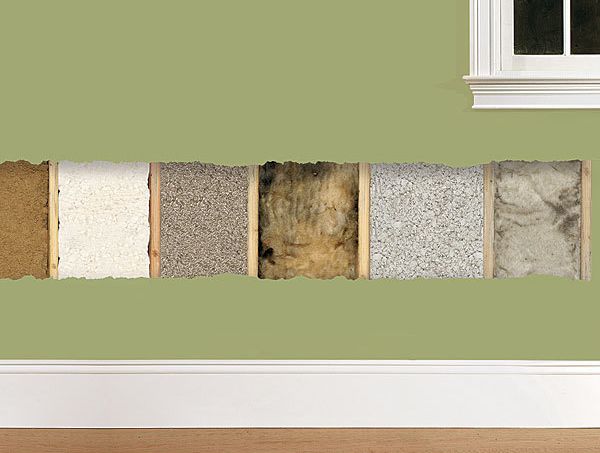New Insulation for Old Walls
You can upgrade insulation without gutting your walls, but not until you know what’s in there now.

Synopsis: Installing insulation as a house is being built is easy to do. Beefing up the insulation in an existing home is a tougher task, especially when you don’t know what insulation – if any – is already in place. Senior editor Justin Fink takes a look at the most common types of insulation that exist in homes today, including balsam wool, urea-formaldehyde foam, vermiculite, fiberglass, rock wool, and cotton batts. Fink then provides information on contemporary insulation upgrades, such as rigid foam (EPS, XPS, and polyiso) and blown-in options (cellulose and fiberglass). This article includes sidebars on determining what type of insulation is already in walls and on ways to remove old insulation (if that is necessary for performing an upgrade). Plus, use our Insulation Upgrade Payback Estimator to estimate how long it will take to payback your investment based on savings in energy costs.
When it comes to insulating floors, walls, and ceilings, nothing compares to the blank canvas of a newly framed house. The house is wide open, so contractors can add any type of insulation they want to achieve the best possible thermal performance. Those guys have it easy.
What about us remodelers, though? The people living in houses built with minimal insulation, or none at all? The ones who don’t have the luxury of gutting their walls? The ones who work on or live in houses that hemorrhage heat in the winter and bake like an oven during the summer? What can we do to improve the thermal performance of these homes? A lot, actually.
Techniques and materials for retrofitting insulation in old walls have improved over the years. Many times, insulation can be added from the interior or exterior of the house without gutting the walls. Even so, I’m not going to sugar coat this: Adding new insulation to closed walls is a hassle.
Pick the low-hanging fruit first
If you are thinking about adding insulation to your walls, chances are that you have already tackled the other major weak spots in the house. If you haven’t, you should, and your efforts should begin in the attic, where the most heat loss typically occurs. If, however, after air-sealing and insulating the attic and plugging some other common energy trouble spots your house still feels drafty and your energy bills are still too high, it’s time to consider the walls.
There’s a lot to consider when it comes to adding new insulation to old walls. The first step is to find out what type of insulation, if any, is in the walls. Once that is determined, you can assess the thermal performance of the walls and make a more informed decision about the potential benefits of an upgrade. You might find that the existing insulation is astonishingly inferior and that a small outlay of cash would mean a significant decrease in your energy bills. Then again, you could be surprised to find that a high-dollar retrofit will offer only a minuscule return on investment.
What’s in my walls?
The first step to narrowing your upgrade options is to learn the type and amount of insulation, if any, in your walls. Houses built before 1930 often were left uninsulated, so you will find either empty stud bays or insulation that was added later. Houses built in the ‘40s, ‘50s, and beyond were typically insulated, but often with thin batts that didn’t fill the wall cavity.
The possibilities shown here represent the most common types of early insulation, but it’s not a comprehensive list. Many of the earliest forms of insulation were driven by the local industry. If the town was home to sawmills, the surrounding houses could be insulated with sawdust. If the town was an agricultural hub, rice hulls were fairly common. What you find in your walls is limited only by the whim of the builder and the previous homeowners.
For more photos and details, click the View PDF button below:
Fine Homebuilding Recommended Products
Fine Homebuilding receives a commission for items purchased through links on this site, including Amazon Associates and other affiliate advertising programs.

Insulation Knife

Great Stuff Foam Cleaner

Respirator Mask


























